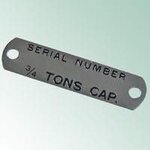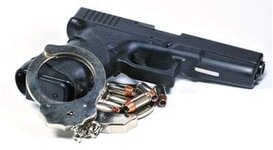- Messages
- 204
- Reactions
- 39
i was thinking.
would a riveted or pinned identification plate affixed to the receiver of the firearm with trust name, city and state on it fulfil the identification requirements for marking?
this assumes correct etching depth, font, size, etc. for the text itself.
this would only require a couple of small holes to be drilled in the receiver to allow the rivets to pass through for attachment, but wouldn't permanently muck up the reciever itself.
something like this:

would a riveted or pinned identification plate affixed to the receiver of the firearm with trust name, city and state on it fulfil the identification requirements for marking?
this assumes correct etching depth, font, size, etc. for the text itself.
this would only require a couple of small holes to be drilled in the receiver to allow the rivets to pass through for attachment, but wouldn't permanently muck up the reciever itself.
something like this:













